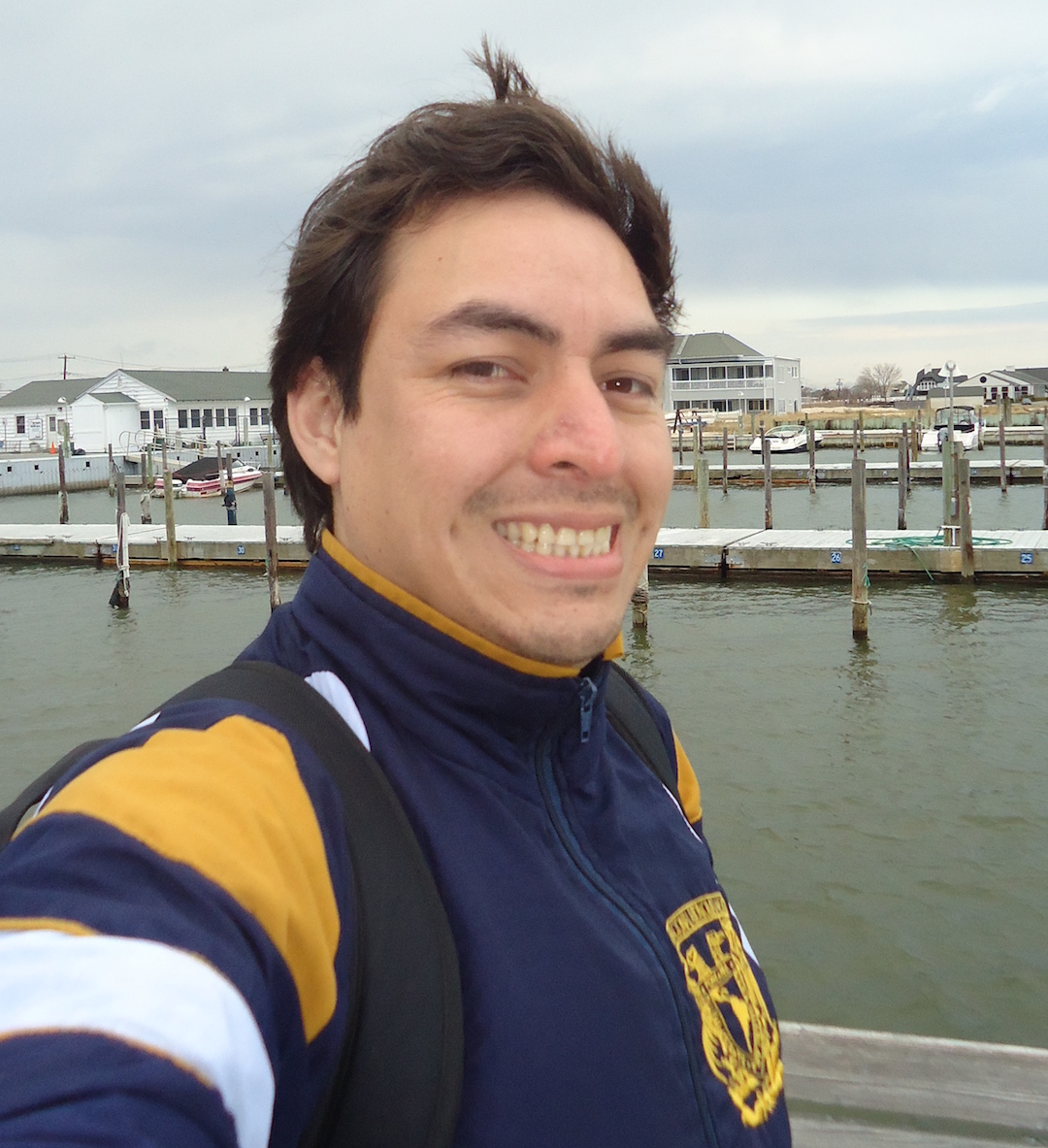Stellar PhD student receives doctorate with honors; is nominated for excellence award in doctoral studies; and plans to return to IACS for further research
 Francisco Javier Domínguez-Gutiérrez says he found the inspiration for his current research while interning last spring at the Institute for Advanced Computational Science (IACS) at Stony Brook University. Visiting from the National Autonomous University of Mexico (UNAM) in Mexico City on a CONACyT Research Fellowship, Javier studied laser-assisted atomic collisions under the direction of Dr. Predrag Krstic with assistance from Dr. Robert J. Harrison and Dr. W. Scott Thornton.
Francisco Javier Domínguez-Gutiérrez says he found the inspiration for his current research while interning last spring at the Institute for Advanced Computational Science (IACS) at Stony Brook University. Visiting from the National Autonomous University of Mexico (UNAM) in Mexico City on a CONACyT Research Fellowship, Javier studied laser-assisted atomic collisions under the direction of Dr. Predrag Krstic with assistance from Dr. Robert J. Harrison and Dr. W. Scott Thornton.
On February 25, he successfully defended his Ph.D. thesis at UNAM, reflecting his multiyear research with his Ph.D. advisor Dr. Remigio Cabrera of UNAM, which earned him a doctorate degree with honors. Such is a distinction “rarely given by physics departments,” said Dr. Krstic who served on his defense committee. Additionally, Javier presented the research he completed at IACS at the annual Concepts of Mathematical Physics in Chemistry workshop in Mexico. There he learned that the paper he wrote based on this research, entitled Multi-resolution Approach for Laser Modified Collisions of Atoms and Ions, was accepted to be published in Advances in Quantum Chemistry, and as a result he was nominated to receive the Alfonso Caso medal for excellence in performing doctoral studies, an accolade awarded annually by UNAM.
“We are really proud to be associated with the excellent research undertaken by Dr. Domínguez-Gutiérrez,” said IACS Director Robert Harrison. “This reflects the passionate approach to science of Dr. Krstic, who is a star member of our IACS faculty. We look forward to the prospect of having Javier join us as a postdoc next year.”
Javier studies laser-assisted atomic collisions and their practical applications in energy generation via nuclear fusion. “There is the possibility to control the charge-exchange process [during ion-atom collisions],” said Javier, “and this might improve our general understanding of the dynamics of atomic processes. I used quantum mechanical concepts and numerical methods to do simulations of ion-atom collisions at intermediate energies.” This, he said, enabled him to visualize ion-atom interactions, helping him better understand how ion-atom charge-exchange collisions are modified by laser assistance. “In my work I found that when laser frequency is well chosen, the charge exchange is enhanced considerably at low collision energies.” According to his IACS mentor Dr. Krstic, Javier’s "contributions to developing relevant computational methods have shed light on a class of time-dependent solutions of Schrodinger equations and have paved the road toward the treatment of time evolutions of complex collision systems in the laser field. "
For now, Javier says his primary goal “is to be a good physicist.” To accomplish that objective, he has applied for Mexico’s national postgraduate scholarship in Plasma-Materials Interactions (PMI) in hopes of returning to IACS as a postdoc. “I now have the possibility to do a postdoctoral stay with Dr. Krstic,” he said, “and I do believe that by working with him I can get the expertise I need to be a good researcher.” Javier says that his “dream” is to work on several physics research topics with applications in energy in a U.S. national laboratory.
When he is not studying physics, Javier says he is playing soccer. “In Mexico, the ‘only’ sport we have is soccer.” As a midfielder, he played on university and competitive leagues throughout his schooling. Now he plays soccer with friends and neighbors in an adult league on Friday nights just to “have fun.”